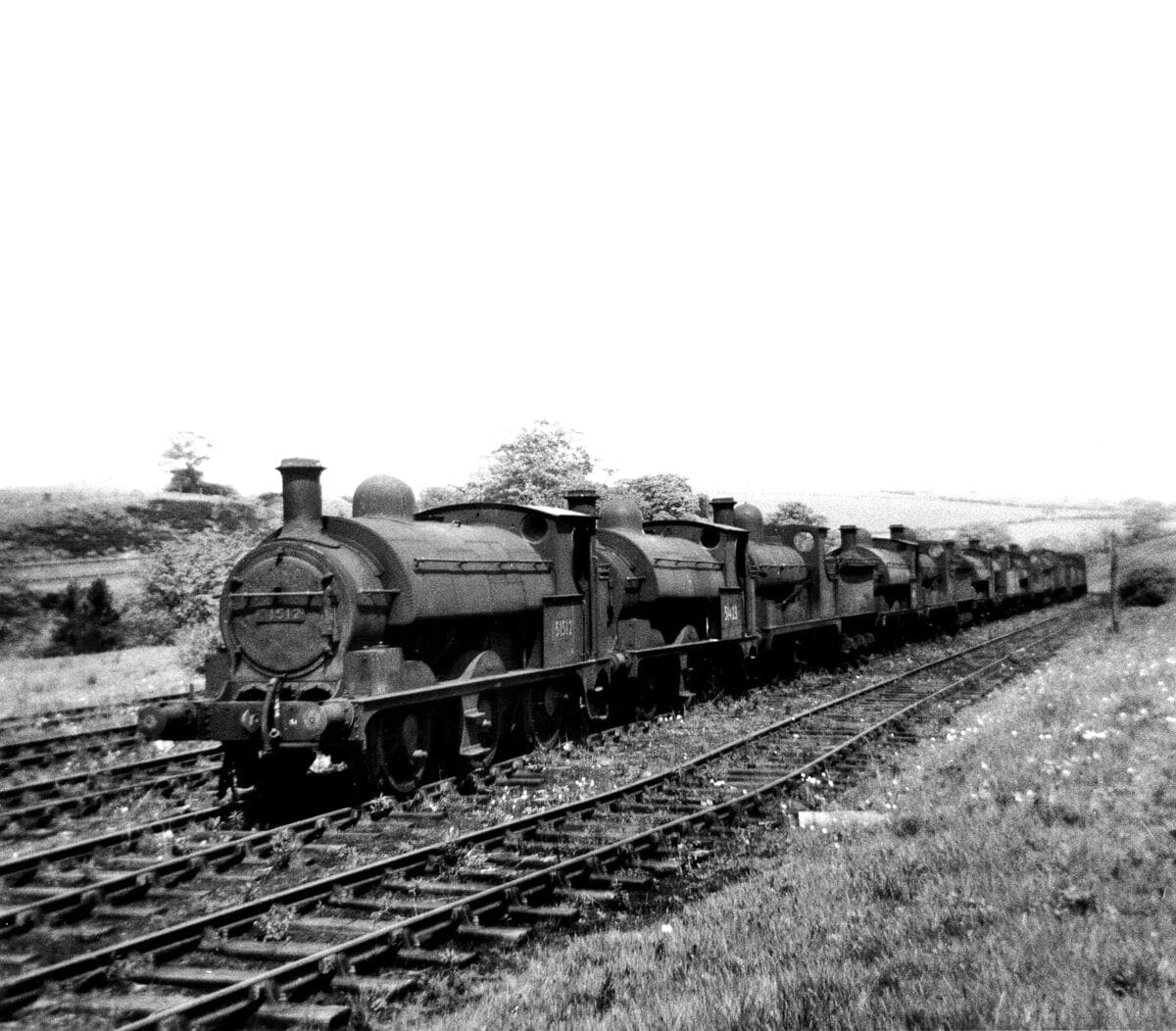Many pre-Grouping steam engines soldiered on until the end of the 1950s but were then withdrawn faster than the locomotive works were able to scrap them. Robert Anderson recalls a trip to see some vintage steam power dumped in a remote corner of Lancashire in 1959.

By the mid to late 1950s most of us young trainspotters had become accustomed to the sight of short lines of veteran steam locomotives in store at most motive power depots. They were usually to be found tucked quietly away on one of the shed’s side roads or out of the way somewhere at the top of the yard. Sometimes a few of them were returned to traffic for occasional use to suit demands but for most of them it was the end.
From 1954 onwards DMUs had been taking over local and branch line services in several large areas of the country and diesel shunters abounded in many goods yards. On top of all this there was the continued alarming decline in freight traffic receipts, which had made the British Transport Commission hastily bring forward the 1955 Modernisation Plan with a headlong rush in 1958.
Enjoy more Heritage Railway reading in the four-weekly magazine.
Click here to subscribe & save.
The lines of stored steam locomotives at sheds grew and grew and often spilled over into neighbouring sidings and goods yards. The withdrawal rates increased accordingly – so much so that by 1958 main locomotive works were struggling to cope with the breaking up of these old locomotives. Worse was to follow with more and more pre-Beeching line closures including in early 1959 the closure of almost the entire Midland & Great Northern system. Some 175 miles of railway, mainly in East Anglia, all in one fell swoop. These closures had the result of cascading relatively modern steam locomotives such as Ivatt 4MT 2-6-0s on to the remaining duties still entrusted to the older classes.
Read more in Issue 220 of Heritage Railway
Advert
 Enjoy more Heritage Railway reading in the four-weekly magazine. Click here to subscribe.
Enjoy more Heritage Railway reading in the four-weekly magazine. Click here to subscribe.




